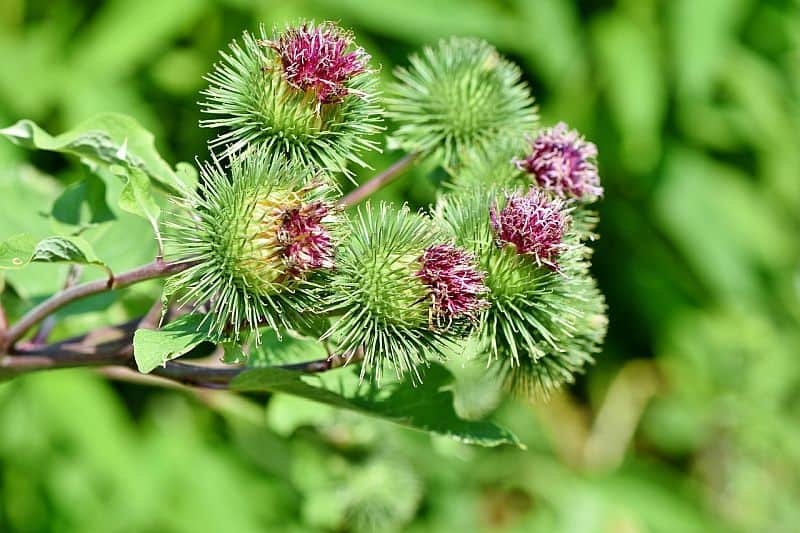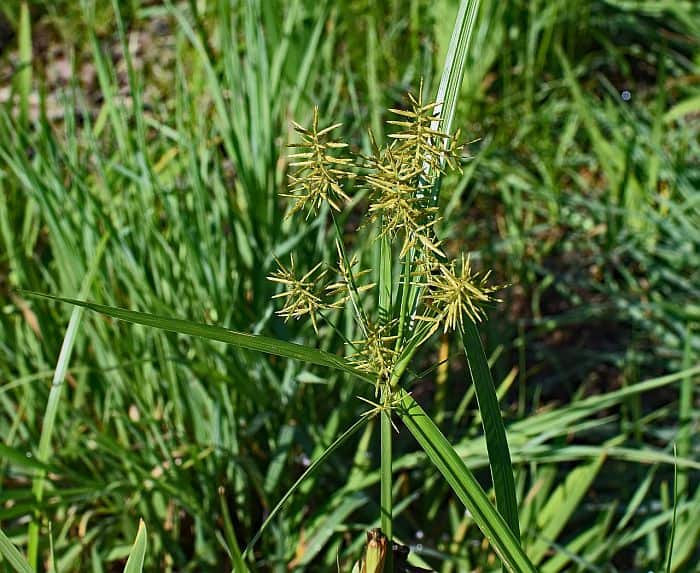Does cold weather kill weeds? It can slow or stop weed growth, as well as kill annuals. However, many weeds have a tendency to come back in warmer weather, even those that die leave behind seeds. You can’t rely on winter alone to kill weeds, but you can use it to your advantage.
Do weeds die in winter? If only the answer were simple. There are many different weeds with different life cycles. Some grow right through winter, whereas others go dormant.
Some die in the winter but leave seeds that germinate in the spring. In this article, I’ll explain the various life cycles of weeds as well as what you can do for weed control.
Contents
Know Your Weeds!
Annuals
Annual weeds die within a year, reproducing by leaving behind seeds. There are two main types of annuals — summer annuals and winter annuals. Summer annual weeds emerge in spring or early summer, when soil temperatures get warmer. They produce seeds before they’re killed by frost in the fall.
Winter annual weed seeds germinate in late summer to early fall and have winter as their growing season. The resulting plants die in the summer.

An example of a summer annual is crabgrass, whereas common chickweed is a winter annual. (Clovers may be annuals or perennials. Click here to learn how to get rid of them).
Controlling Annuals
Fortunately, annuals are much easier to deal with than perennials. You can control them with herbicides, by mowing, by thickening your lawn, by covering them with mulch, and by hand pulling. You can also easily kill an annual by destroying part of its root system, just below the soil. In contrast, you have to remove entire root systems to get rid of perennials.
When you should use a pre-emergent herbicide depends on whether you’re dealing with summer or winter annuals. For summer annuals, apply it in the spring. You can control winter annuals by applying a pre-emergent herbicide in the fall, although it’s unlikely to be completely effective.
Winter annuals have a long emergence period, meaning that a pre-emergent herbicide may be gone before they’re done emerging. You can also kill annual weeds with post-emergent herbicides, such as glyphosate.
Biennials
Biennial weeds have a two-year life cycle. In their first year, they grow without flowering and form rosettes, a plant form without a central stalk. In their second year, they grow flowering stalks and produce seeds. They then die. Fortunately, biennials only spread by seed.

Queen Anne’s lace and burdock are biennials.
Controlling Biennials
To get rid of biennials, you have to kill or remove their taproots. You can do this by hand or with herbicide. You can also prevent their emergence with mulch.
Perennials
Perennials live for many years, not dying after flowering. They have underground parts that enable them to store energy through winter. There are two types of perennial weeds:
Simple Perennials
Also called solitary perennials, simple perennials grow singly. Though you may see simple perennials of the same species growing close to each other, their root systems aren’t conjoined. They only spread by seed. Simple perennials generally have taproots, which can be large.

Dandelions, plantains, and curly dock are simple perennials.
Spreading Perennials
Spreading perennials can germinate from seeds and spread by runners. Rhizomes are runners that grow underground, whereas stolons grow aboveground. Spreading perennials can take over an area in a few years.

Common spreading perennials include yellow nutsedge, quackgrass, and zoysiagrass.
Controlling Perennials
Perennials are the most common weeds on established lawns and in landscaped planting areas. They’re easiest to control during their first year. If you don’t remove their entire root systems, they may regrow.
You can also control perennials with an herbicide. A pre-emergent herbicide will kill some as they emerge from the ground. Other weeds require post-emergent herbicide. If you use herbicide, make sure you protect desired plants from the spray.
You can also reduce perennial weeds on your lawn by helping it to grow thick. Mow it at about three inches in height to help it outcompete weeds.
Simple perennials are easier to control than spreading perennials. Because they only spread by seed, you put down mulch to prevent them from germinating.
Landscape fabric can help control spreading perennials, although they tend to grow through the gaps. Cheryl Wilen explains that if you use landscape fabric, the holes you cut into it to go over desired plants should be Xs rather than circles. This will reduce space for weeds to grow through:
It’s easier to prevent spreading perennials than it is to eradicate them after they’ve taken over your yard. As soon as you see one, it’s good to dig it up or spot-treat it with herbicide.
Cold Weather Affects Plants Differently
Do weeds die in winter? Unfortunately, you can’t rely on weather to kill weeds for you.
Winter annuals, biennials, and perennials survive through winter, although annuals die within one year and biennials within two. Summer and winter annuals leave seeds before they die. Controlling weeds requires vigilance and a little work. Methods include:
- Pre-emergent herbicide
- Post-emergent herbicide
- Mulch
- Landscape fabric
- Manual removal
- Letting your grass grow thick
By the way, getting rid of weeds isn’t your only option. Check out so-called “weeds” worth keeping around.
Have any questions? Please let me know in the comments.
